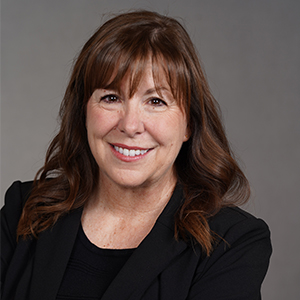In a conference room packed with lenders at the Ellie Mae Experience conference, it was clear that the proposed changes to the TILA-RESPA Integrated Disclosure rule are welcome, but don’t go nearly far enough.
The biggest complaint? The Consumer Financial Protection Bureau’s proposed changes to the rule don’t address two of the biggest challenges, both of which concern lenders coordinating with title and settlement services.
“The fact that the proposed changes did not address the SIMO [simultaneous closing] issue is the greatest boots-on-the-ground pain point industry-wide,” said Jerra Ryan, senior vice president of compliance at First Choice Loan Services, in an interview with HousingWire. “There is still a profound lack of clarity.”
Ryan was one of three compliance experts on the panel outlining the latest updates on the proposed changes. She was joined by Angela Cheek, vice president and counsel, product compliance at Ellie Mae, and John Haring, director of compliance enablement at Ellie Mae.
The SIMO issue refers to the premium for an owner’s title insurance policy for which a special rate may be available based on the simultaneous issuance of a lenders’ and an owner’s policy. Under the TRID rule as it is now implemented, consumers in many states aren’t receiving an accurate disclosure of their title insurance premiums because lenders can’t disclose this rate.
“I absolutely get where the CFPB is coming from in states where this [regulation] applies,” Ryan said. “If the borrower has to pay a premium they should be able to see what the lower cost would be. But they are forgetting that in 28 states or more it doesn’t work that way. It’s confusing to the consumer.”
And it erodes consumer trust if the loan estimate contains one rate, but the lender knows they can actually get a better rate with a simultaneous issuance. “It puts originators in a terrible position, because they have to show that to the customer and then say, ‘Trust us, that fee is not going to be that high.’” Ryan said. “It also puts lenders at a competitive disadvantage if one company is following the letter of the law and disclosed according to the TRID required methodology, which another company is not doing that and shows a lower rate.”
The panel also discussed another thorny issue for lenders which the proposed TRID changes didn’t fix: the so-called “black hole.”
“The one thing in the Preamble that the CFPB said they were not going to address is the one thing everyone put at top of list that they wanted addressed — the ‘black hole,’” Haring said.
The Community Home Lenders Association warned of this problem area before the rule even took effect in 2015. “Specifically, when a borrower makes a request to delay the closing after the Closing Disclosure has been made, but more than seven business days before the new closing date, that there is no apparent legal way for the lender to disclose an increase in costs, for example in conjunction with a loan lock extension fee. The timing of the requirements could create a ‘black hole.’”
Trade groups have consistently voiced their concern about this catch-22 since the initial comment period, to no avail.
And Haring warned that lenders need to be diligent on this issue even if it doesn’t seem like it’s being enforced at the moment.
“Aggregators don’t have systems to identify that an increase in fees happened, and they may not find it until after the fact. But this is one of those areas that even though it’s not slowing down the purchase today, you can bet if there is ever any challenge under reps and warrants, you are not going to have much wiggle room out of it,” Haring said.
“The most dangerous thing a lender can do is to think that if an issue is not preventing me from selling a loan today, it must not be an issue.”
The panel explored the ways technology can help mitigate these issues and provide protection not only for consumers, but for individual companies, investors and agencies.
“We have an 1,888 page regulation, with lots of black and white rules, but also lots of gray space. Our job in compliance is to define the black for our companies within that gray space,” Ryan said. “Technology, specifically compliance management systems, benefits the consumer and also lets us sleep at night.”
Other issues addressed by the panel include the confusion by some settlement companies and lenders about providing buyers’ closing documents to other parties, and the uncertainty of calculating cash to close. The cash-to-close amount is often confusing to consumers, Ryan said, which can result in the lender having to cover the difference between what the buyer thinks is the total amount, but might be just the down payment amount.






